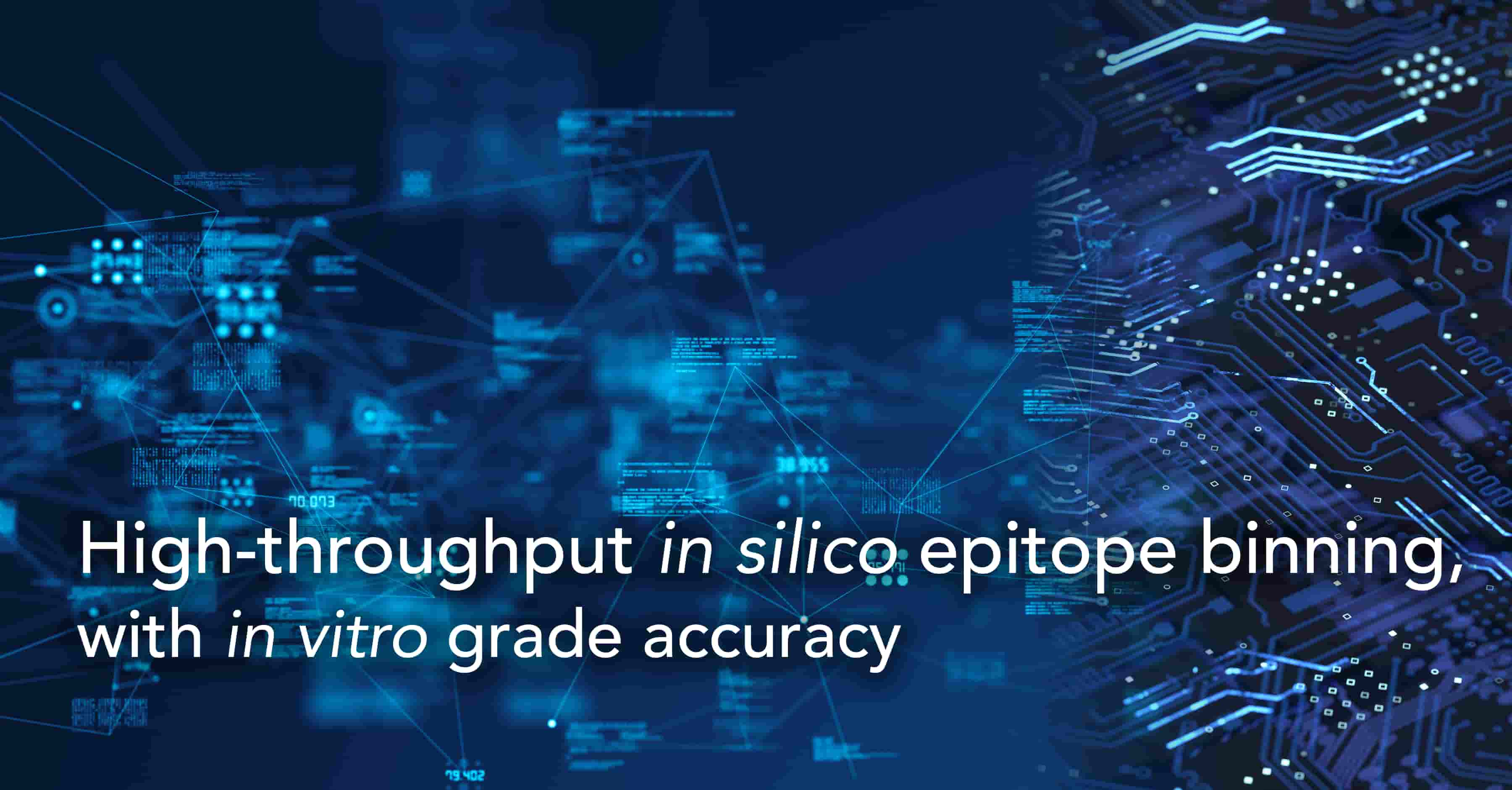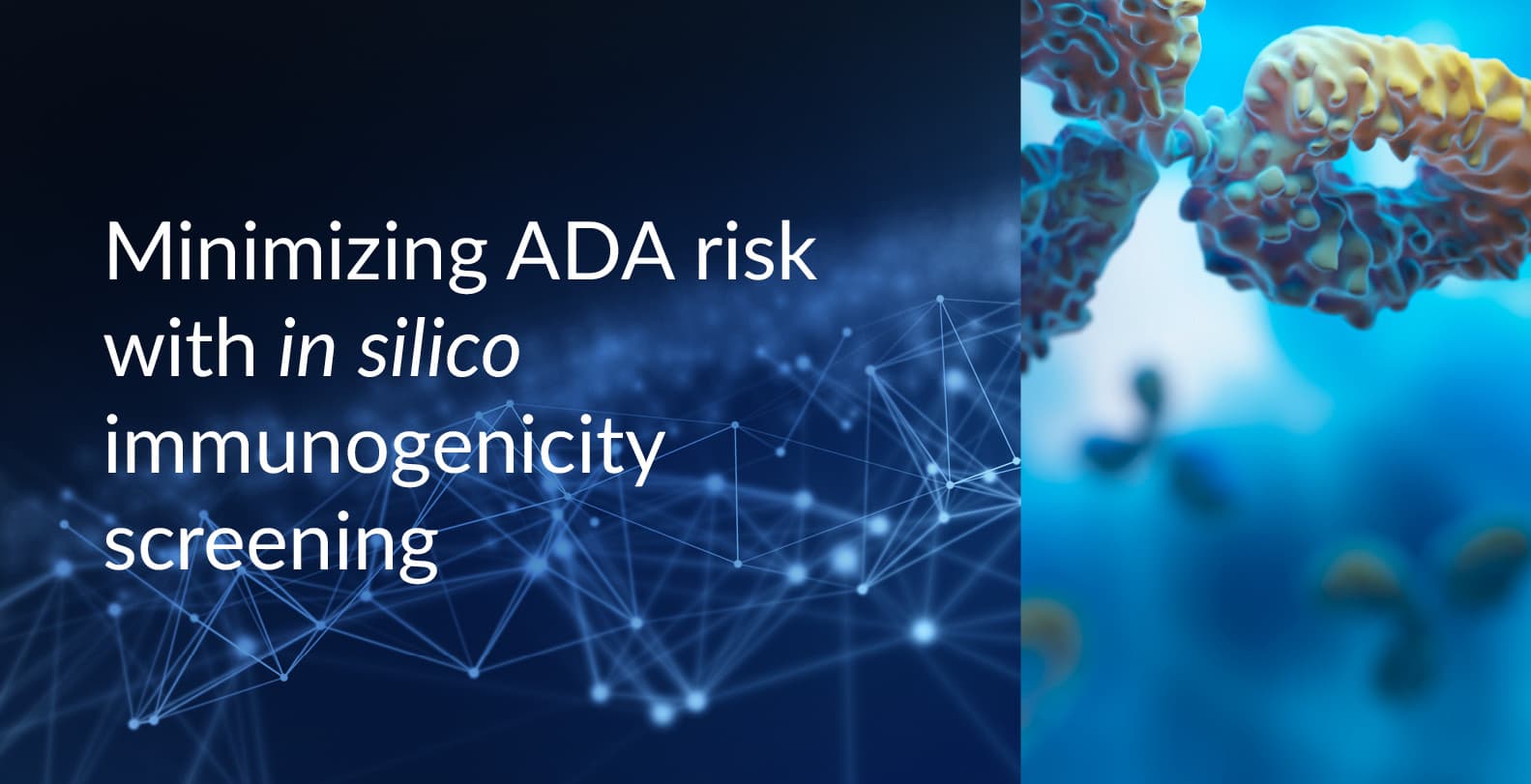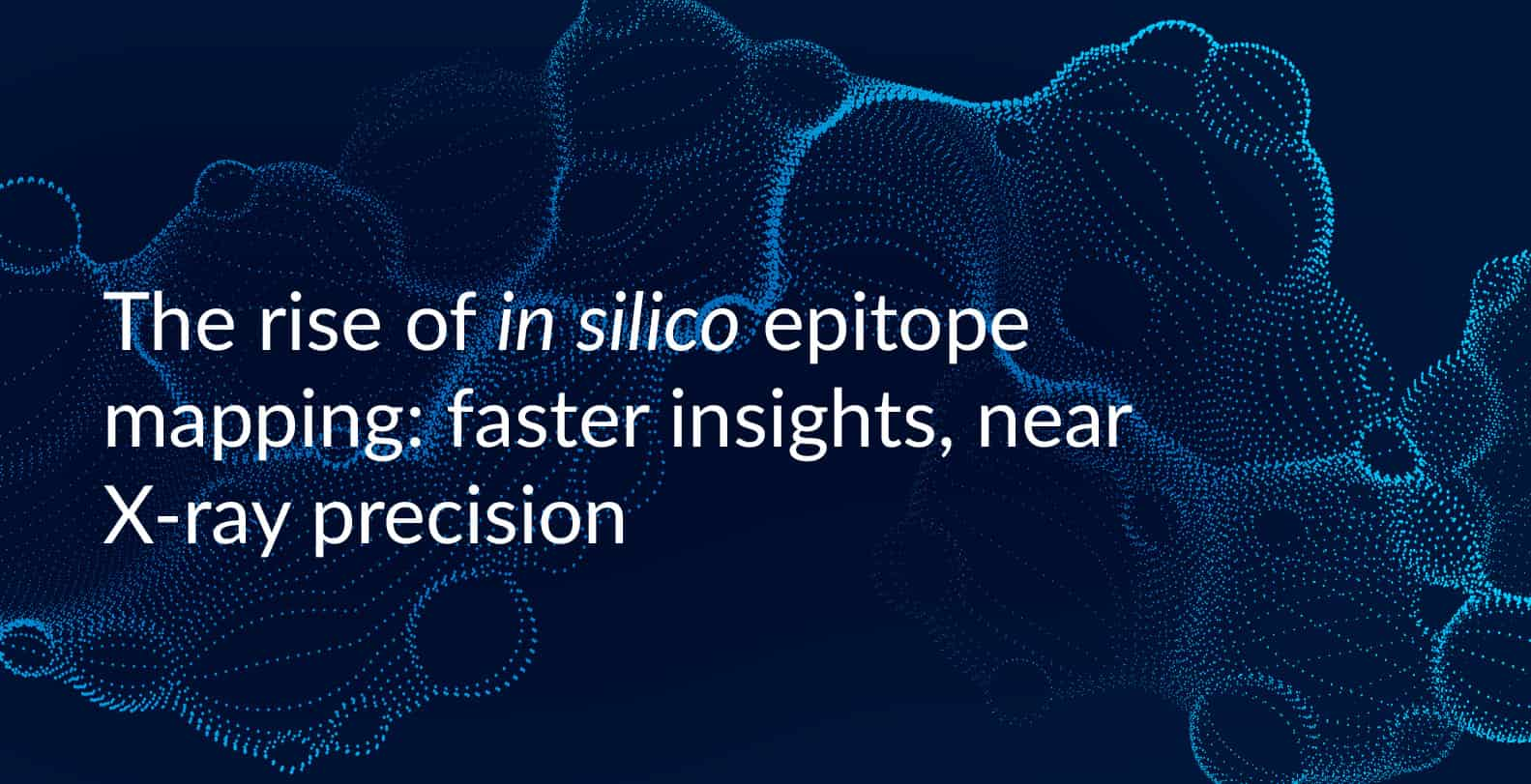High-throughput in silico epitope binning, with in vitro grade accuracy

Efficient, scalable antibody drug discovery and development is grounded in the high-throughput isolation of substantial quantities of diverse monoclonal antibodies, which can then be screened for desirable antigen binding, biological function and molecular properties. Continuous technological advancements in the high-throughput isolation of antigen-specific mAbs have played a central role in elevating therapeutic monoclonal antibodies (mAbs) to a dominant position in the biopharmaceutical market.
To facilitate high-volume diversity-driven discovery efforts, there is a growing need for approaches that are able to perform subsequent screening and characterization of the binding and functional properties of mAbs in a high-throughput fashion, such as in silico binning of mAb epitopes.
In silico alternatives must measure up to two key criteria: one, they must be capable of matching the high accuracy of classical wet lab binning procedures. And, two, they must demonstrate significant scalability and throughput performance improvements in early-stage antibody discovery.
Here, we present the LENSaiTM approach to high-throughput in silico epitope binning validated against classical wet lab binning results.
LENSai in silico epitope binning, validated against classical in vitro competition assays
Program Summary
This program for the comparative analysis of in silico and in vitro epitope binning was structured into the following three discrete phases:
- Phase 1: Independent LENSai in silico binning
- Phase 2: Independent and blinded wet lab screening with in vitro competition assays
- Phase 3: Inter-annotator agreement analysis to compare in silico and classical wet lab results.
Phase 1: Independent in silico epitope binning with LENSai
LENSai epitope binning as part of the LENSai BioIntelligence Suite is a next-generation framework designed for accelerated, accurate, high-throughput in silico mAb epitope binning while reducing time and costs. This advanced approach leverages proprietary smart algorithms for concurrently analyzing over 5,000 antibody sequences, returning results for small subsets in hours. These proprietary algorithms include antibody sequential and structural profiling, docking information that accounts for steric hindrance and glycosylation sites, and atomic interactions of Ab-Ag complexes. LENSai enables the rapid detection/isolation of clusters of clones with similar target binding regions from large pools of antibodies to ensure comprehensive and inclusive selection.
For this comparative analysis, in silico epitope binning was independently performed on 29 antibody sequences directed against a transmembrane protein. The LENSai framework identified 6 distinct clusters, comprising antibodies that share a similar target binding region, organized by cluster proximity (Fig.1). The results can also be viewed as a graph (Fig.2), with Abs organized by combined feature similarity. Within a cluster the center Ab is highlighted with a black border. This center Ab is the one closest to all other members of its cluster. The degree of combined feature similarity is also visualised with lines (red=high, blue = low) within and across clusters. A zoom feature allows further drilling down to have a more detailed view on specific regions of interest within the graph.
In silico epitope binning was performed independently and blinded from the wet lab procedure.

Fig.1: 3D grid view of antibody clusters/cluster proximity.

Fig.2: Graph view of antibodies by similarity/proximity.
Phase 2: Independent wet lab epitope binning with in vitro competition assays
A BLI-based analysis of the 29 antibodies was performed to generate classical wet lab binning data (Fig. 3) that could then be compared with the in silico binning data. This exercise yielded 6 non-overlapping bins, including 3 consisting of 2 sub-bins, with the bins being assigned based on the combined outcome of a sandwich assay containing the target monomer and a tandem assay containing the target dimer.

Fig.3: Classical wet lab epitope binning data heatmap.
Phase 3: Inter-annotator agreement analysis to compare in silico and classical wet lab binning data
Prior to comparison, a majority consensus label mapping was applied to normalize the labels across in silico clusters and in vitro epitope bins. Since this mapping is not reciprocal, it has been applied in both directions to specifically account for any differences between the number of bins and clusters. The two sets of normalized data were then compared with an inter-annotator agreement analysis (Cohen’s Kappa Test) in order to assess inter-rater agreement and reliability.
Interpreting Cohen’s Kappa Test results
The Cohen’s Kappa Test indicates a near-perfect agreement (k > 0.8) in the independent results generated by both approaches (Fig.4), with LENSai in silico epitope binning matching in vitro competition assays with high confidence. A superimposed visualization of both datasets depicts the overlap between predicted in silico clusters (indicated by a color and associated number) and BLI-based wet lab bins (represented as geometric shapes).


Fig.4: Cohen’s Kappa Test results
Finally, several factors account for the marginal difference in results between in silico and in vitro methods, including:
- Possible differences in glycosylation status of the target in each approach; e.g: full homogeneous glycosylation in silico versus potentially more heterogeneity in vitro.
- Subtle differences in wet lab data might be hard to interpret.
- The use of both monomeric and dimeric target in wet lab assays as compared to in silico binning being performed solely with monomeric target.
- Even though steric hindrance is taken into account in both approaches, the methodology differs, with competitive behavior being the main driver of wet lab binning.
- The difference in the impact of antibody binding strength in in silico binning vis-a-vis in vitro assays.
Key advantages of in silico epitope binning with LENSai
The LENSai application for epitope binning combines the high-speed, high-throughput capabilities of in silico approaches with the accuracy of experimental in vitro methods. Also, this computational workflow only requires protein sequences, thereby eliminating the need for physical materials. The framework’s high-precision multi-dimensional clustering and multi-format data visualization capabilities are designed to streamline early epitope landscape profiling and maximize the productivity of early triaging. The solution also scales effortlessly across thousands of antibody sequences as well as diverse mAb research projects including those addressing hard-to-produce target proteins. Most importantly, perhaps, the LENSai in silico epitope binning framework brings the high-throughput capabilities required to speed up antibody drug discovery and development.
To learn more about integrating high-throughput, high-precision LENSai in silico epitope binning to your antibody discovery pipeline, please contact us here.
Download the epitope binning case study
Subscribe to our Blog and get new articles right after publication into your inbox.
Subscribe to our blog:






